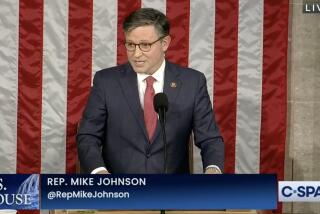Shortfall in Pension Plans Grew 31% in ’92 : Retirement: Top 50 underfunded plans had gap of $38 billion, according to the federal pension guarantee agency.
- Share via
WASHINGTON — The risk that millions of Americans may not get promised pension benefits worsened last year, according to government figures released Monday.
The Pension Benefit Guarantee Corp. said the gap between assets and promised benefits in the 50 largest underfunded pension plans grew 31% in 1992 to $38 billion, from $29.1 billion a year earlier. It was the fifth straight annual increase.
The PBGC, the government pension insurance agency, is liable for $31.7 billion of the funding shortfall.
Labor Secretary Robert B. Reich has estimated that total underfunding for all pension plans grew from $27 billion in 1987 to $45 billion in 1992.
“These results underscore the need for pension funding reforms and provide additional evidence that current law is not working,” said PBGC Executive Director Martin Slate. “The Clinton Administration has reforms now before Congress to strengthen the law and to improve pension security.”
The Administration has asked Congress to speed sponsor contributions to underfunded plans and enhance the PBGC’s authority to require compliance. It also wants the plans considered most at risk to pay higher premiums and pension disclosure information written so plan participants can easily understand it.
The PBGC said most U.S. pension plans are fully funded and emphasized that inclusion on the Top 50 list does not reflect on a company’s financial health or necessarily mean pension benefits are in immediate jeopardy.
“Many companies on the list are strong and will be able to fund their pension plans,” Slate said. “However, to better prepare themselves for retirement, participants should know more about their plan’s funding and PBGC’s guarantees.”
The National Assn. of Manufacturers has criticized the annual list, saying it creates unnecessary anxiety. It contends that many companies have legitimate reasons for underfunding their plans, including newly negotiated union contracts and worse than expected investment returns.
The PBGC guarantees pensions up to $29,250 a year per plan participant. But some workers and retirees in underfunded plans remain at risk because PBGC guarantees sometimes do not cover all benefits promised by the sponsoring companies.
Funding shortfalls in 1992 increased primarily because of falling interest rates that reduced investment earnings, the agency said. But it added that funding by many companies did not keep pace with growing liabilities because of weaknesses in current law.
Ravenswood Aluminum Corp. was at the top of the list for the second straight year, with $100 million in guaranteed liabilities, $11 million in assets and $89 million in unfunded guaranteed benefits. That translates to a funding ratio of 11%, compared to 12% in 1991.
But the shortfall was concentrated in the auto and steel industries, the PBGC said. The auto industry, with an $18-billion gap, represented 57% of the total underfunding in the Top 50 list, while steel, with a nearly $7-billion deficit, accounted for 21%.
Still, Chrysler Corp. was one of seven companies that kept pace with growing liabilities and, in some cases, reduced its underfunding in 1992, the PBGC said.
Chrysler reduced its gap by more than $3 billion through additional contributions beyond those required. LTV Corp. cut its shortfall by more than $700 million.
In addition to threatening workers and retirees, underfunding poses a risk for the PBGC itself. The agency already faces a $2.7-billion deficit, which could grow with the failure of additional plans.
Even so, Reich and other officials say the agency is not near the kind of crisis that led to the savings and loan bailout.
The PBGC was created by Congress in 1974 to guarantee payment of basic private, defined-benefit pensions. Its programs cover more than 41 million workers and retirees in 67,000 plans.
More to Read
Inside the business of entertainment
The Wide Shot brings you news, analysis and insights on everything from streaming wars to production — and what it all means for the future.
You may occasionally receive promotional content from the Los Angeles Times.










